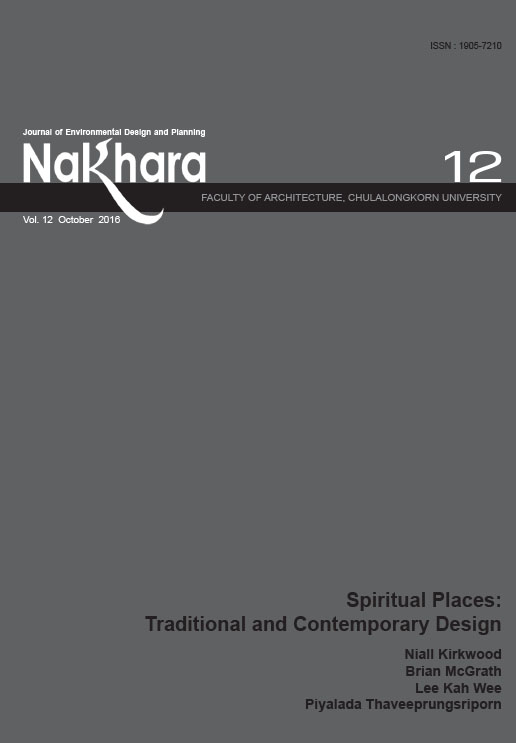Sacred Innovation in the Shadow Conservation Network
Main Article Content
Abstract
The global shadow conservation network is informally composed of all the sacred lands of the world. This essay explores the lands of the Kayapo of the Amazon Basin; the Maasai of Southern Kenya and Northern Tanzania; the Turkana of Northern Kenya; the Subak of Bali; the Khasis of Northern India and the Tofinu of Benin and the ancient infrastructures found there. From the material and construction modules, to the ecosystem as a whole, the sacredness imbued in the landscape works to maintain its ecological sustainability.
By combining eco-technology with sacred mythology, we find new and unique ways humans live symbiotically
with nature. Three critical questions guided the beginning of this research: What ecologically sustainable knowledge do indigenous people know that we once knew? Is this knowledge lost or just forgotten? How can ecological designers use this knowledge today? The innovative landscapes these communities have evolved show us the potential environments mankind is capable of creating. Rather than primitive, as Corbusier would say, these relationships are primal, within us all.
Article Details
References
Berkes, F. (2012). Sacred ecology: Traditional ecological knowledge and resource management. Philadelphia: Taylor and Francis.
Carter, N., Vina, A., Hull, V., McConnell, W., Axinn, W., Ghimire, D., & Lui, J. (2014). Coupled human and natural systems approach to wildlife research and conservation. Ecology and Society, 19(3).
Darwin, C. (1859). On the origin of the species. London: John Murray.
Frece, A. & Poole, N. (2008). Constructing livelihoods in rural Mexico: Milpa in Mayan culture. The Journal of Peasant Studio, 35(2).
Foreman, R.T. (1986a). Landscape ecology. n.p.
Foreman, R.T. (1986b). Pine barrens: Ecosystem and landscape. n.p.
Garibaldi. A., & Turner, N. (2004). Cultural keystone species: Implications for ecological conservation and restoration in ecology and society. n.p.
Grobman, Gary M. (2005). Complexity theory: a new way to look at organizational change. Public Administration Quarterly, 29(3).
Kolbert, E. (2009, May 25). A reporter at large, “The sixth extinction?” The New Yorker.
Le Corbusier. (2007). Toward an architecture. Los Angeles: Getty Research Institute.
Liu, J. (2007). Complexity of coupled human and nature systems. Science, 317(5844).
Miller, A. (2010). Fire, agency and scale in the creation of Aboriginal cultural landscapes. Online: Springer Science.
Miller, A., & Davidson-Hunt, I. (2010, June). Fire, agency and scale in the creation of Aboriginal environments. Human Ecology, 38(3), 401-414.
Niyonkuru, C., Laleye, P.A., & Moreau, J. (2010). Impact of acadja fisheries on the population dynamics of Sarotherodon melanotheron and Hemichromis fasciatus in a Lake Nokoué. Benin, West Africa: Knowledge and Management of Aquatic Ecosystems.
Paine, R. T. (1995). A Conversation on refining the concept of Keystone species. Conservation Biology 9 (4), 962–964.
Posey, D., & Plenderleith, K. (2002). Kayapó Ethnoecology and Culture. London: Routledge.
Rudofsky, B. (1964). Architecture without architects. New York: Doubleday & Company.
Sachs, J. (2006). The UN Millennium ecosystem assessment. London: House of Commons.
Shugart, H., & O’Neill, R. (1979). Systems ecology. Dowden: Hutchingon & Ross.
Tedlock, D. (1996). Popol Vuh: The Mayan book of the dawn of life and the glories of gods and kings. New York: Touchstone.
Wilson, E. O. (1999). The diversity of life. n.p.
Welcomme. R. L. (1972). An evaluation of the acadja method of fishing as practised in the coastal lagoons of Dahomey (West Africa). the Journal of Fish Biology.
World Wildlife Foundation. (2014). Living planet report. n.p.

